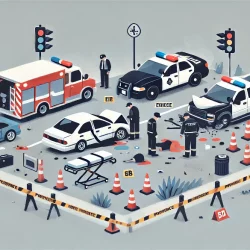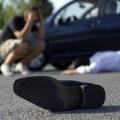California Court Makes GPS Mapping While Driving Illegal
Innovation in technology is often driven by necessity. The major problems are addressed first, as developers and programmers see a clear need that requires filling. Yet the biggest problems are also the toughest to solve, so speedier advancements often come in areas that don’t necessarily solve all the world’s problems, but simply hope to make your life just a little bit easier than it was yesterday. Such is the case with mobile technology. A smartphone may not save your life (though the programmers behind first aid apps may disagree), but it will certainly help you tackle many regular daily tasks with more convenience and less effort. One of the most popular elements of smartphones is GPS service, with those instantly available maps that help you get from point A to point B, even if you had no idea of where you are. The printed map is becoming a thing of the past, and many smartphone users now head to their cars without really knowing where they’re going, sure they’ll figure it out along the way. Well, the party is over for California drivers, who thanks to a new law can be ticketed for checking their GPS maps while driving.
This new legal action comes down from a California appellate court, and a case entitled California v. Spriggs. The argument made by the state was that drivers shouldn’t be able to reference their smartphone, regardless of the action. They compared checking your map to reading emails or text messages, basically bunching GPS map reading in with everything else that’s currently considered a cause of distracted driving accidents.
Distracted driving laws are fairly new to the books. Smartphones haven’t been around that long in the grand scheme of things, and it has taken some time to determine their impact on safe driving. The American Journal of Public Health released a study back in 2010, and their results were decidedly mixed. The study declared that a ban on texting while driving did reduce the number of car accidents, but that after several months the reduction disappeared, and a similar amount of accidents were seen.
More recent studies admit these mixed results, but still declar that the laws are a step in the right direction. The American Economic Journal is publishing new data in May. Their goal is to study vehicle accidents that could be said to be specifically caused by distracted driving due to smartphone usage. They handpicked cases where the accident only involved one vehicle with no passengers. But enforcement is still a crucial piece of the process. California is tightening the ban, but such is not the case everywhere. In many states, texting and driving is not a ticketable offense. Police officers can add that on to another citation, but cannot pull a driver over solely for texting.
California hopes with this new, stricter ban, accidents will be reduced. Other states with similar laws have seen fatalities from car accidents plummet by 8%. That’s a lot of lives saved. The California v. Spriggs case leaves a lot of loose ends, however. It is unclear whether drivers will be allowed to use their mapping services with hands-free device assistance, such as you can receive as part of mobile insurance from protect your bubble. But many safety organizations don’t think hands-free usage will make that much of a difference. Only time will tell how California drivers’ safety is impacted by this case. But it’s clear that west coasters won’t be able to access this level of technological convenience without fear of a traffic citation.
More to Read:
Previous Posts:




